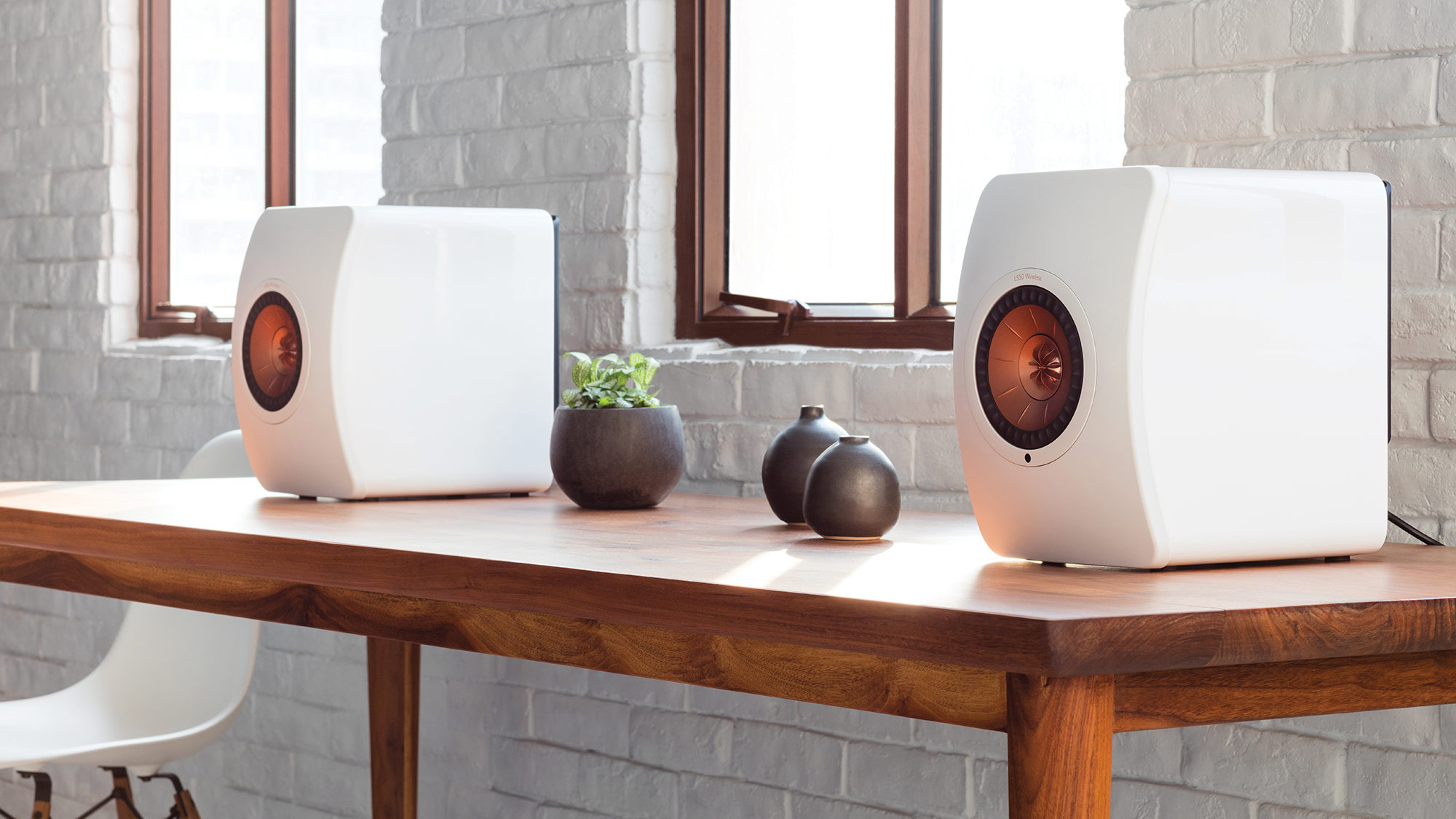TechRadar Verdict
The KEF LS50 Wireless is an amazing sounding pair of speaker made for the new audiophile who doesn’t want to think about picking different source components. While the LS50W is expensive, you’ll be hard pressed to put together a better sounding package for the money if you went with the passive LS50. Our only reservations are nitpicks which were quickly forgotten when listening to the stellar sounding speakers.
Pros
- +
Breathtaking sound quality
- +
Tons of inputs
- +
Beautiful, compact design
Cons
- -
No AirPlay or Google Cast
- -
Basic remote
- -
Slow mobile app
Why you can trust TechRadar
If you’re starting to take your music listening experience more seriously, it’s natural to look into getting a speaker setup. That is until you realize that you’ll have to pick a preamp, amp, and DAC to get your dream speaker setup. That’s a lot research and setup, which is quite intimidating to a hi-fi newbie.
But what if there was a speaker system that just worked out of the box? What if all you had to do was plug the speakers into the wall and turn on some music?
Thankfully, this dream system is real and it’s made by the folks at KEF.
The LS50 Wireless is an all-in-one speaker system that is dead-simple to set up and lets you play from a variety of sources out of the box, with room to grow with you over the years.
After spending several months with the KEF LS50 Wireless, we were blown away by the package that the company was able to engineer. The speakers offer mind-blowing sound quality with absolute neutrality, hologram-like imaging, and an expansive soundstage. Plus, it was dead simple to set up and use from any of its sources. While not cheap, the LS50 Wireless is actually quite a bargain when taken as a complete package.
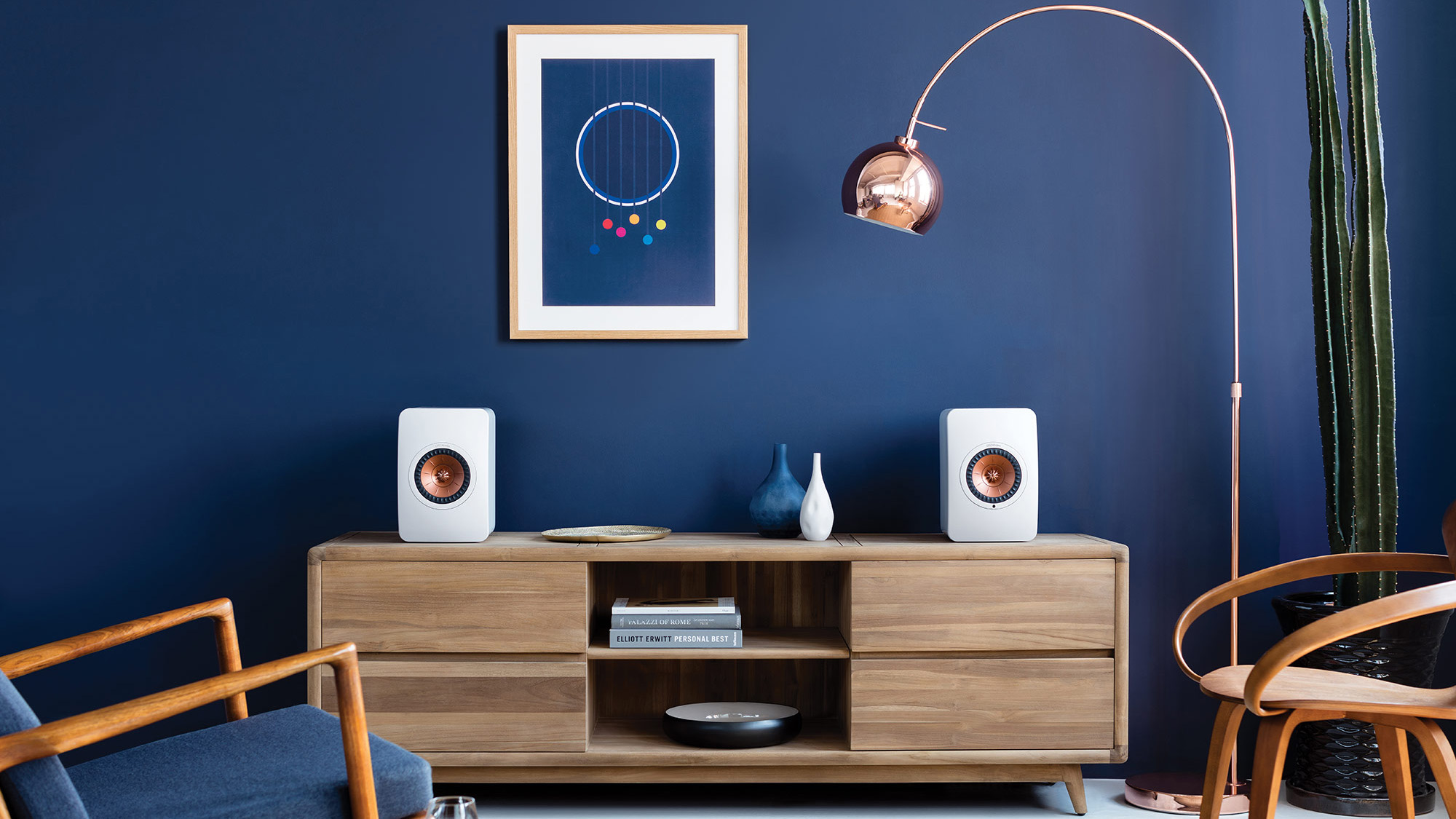
Design
The KEF LS50 Wireless are a gorgeous pair of bookshelf-sized speakers that will look great on your desk or in your home theater.
Our unit came in a glossy piano black but there’s a white and silver version as well. The front of the speaker is dominated by KEF’s Uni-Q drivers which puts the tweeter in the center of the bass and midrange woofer. This, claims KEF, allows the speakers to offer a three-dimensional soundstage no matter where you’re sitting and it really works (more on this in the Performance section).
On top of the right speaker you’ll find touch controls for power, Bluetooth, source, and volume. The controls are illuminated when the speakers are turned on and are easy to press, though they don’t provide any tactile feeling since they’re touch control. However, there’s an included remote that offers physical buttons if you miss the tactile feel.
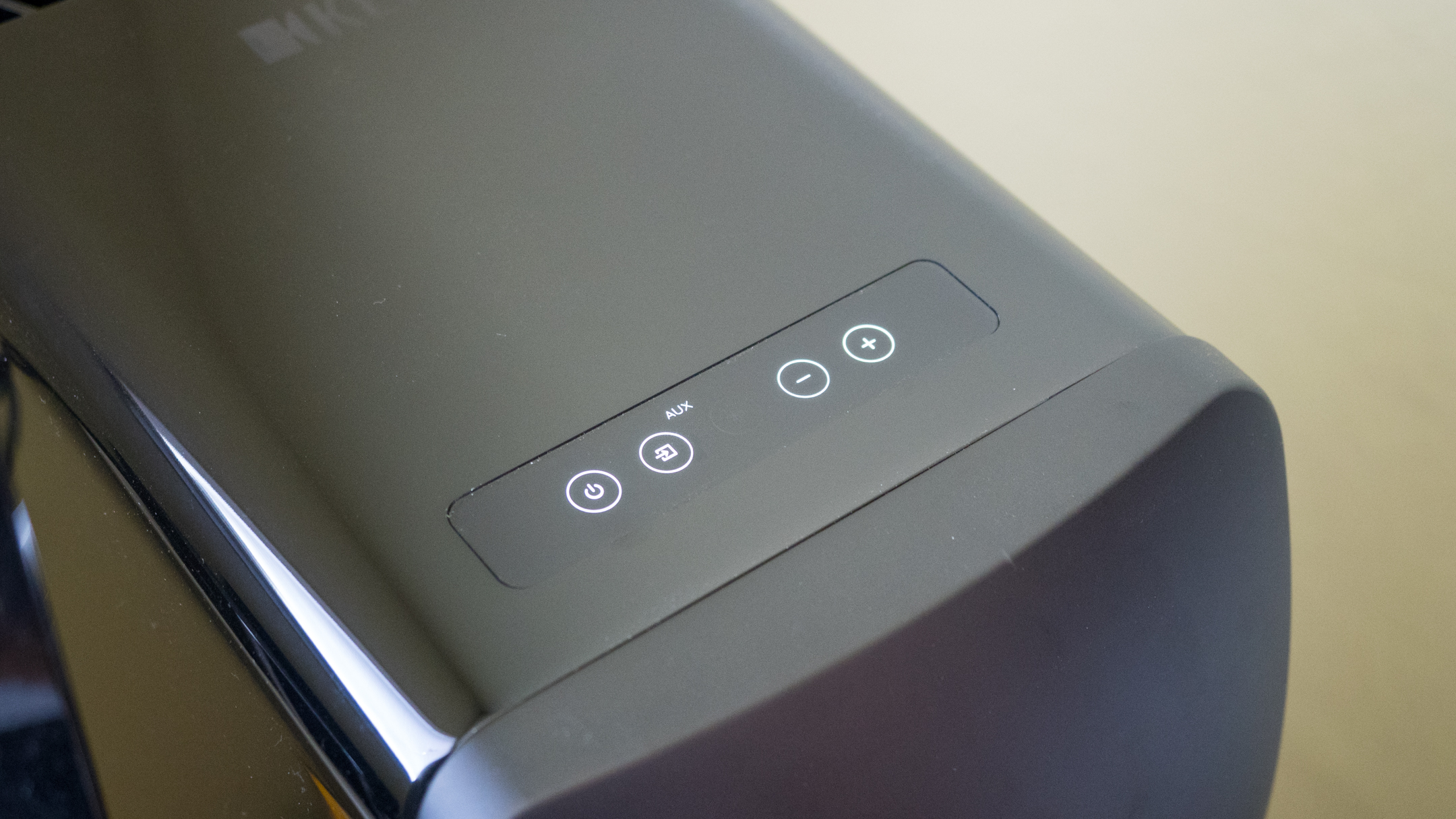
Speaking of the remote, the one that comes in the box is fairly basic that’s just one step above the awful card-sized remotes with membrane buttons that ships with just about every soundbar and preamp. The remote is made of plastic but still feels nice in the hand and it replicates the touch controls on the top of the speaker plus buttons for previous/skip track and mute.
One nitpick we had about the LS50 Wireless is the fact that if you change inputs using the remote control that you have no idea what input you’ve switched to unless you at the panel on top of the speaker. This means you either have to memorize the sequence of inputs or have to get up and look at the speaker. We wish the included speaker included dedicated source buttons to switch instantly instead of cycling through them - but it didn't prevent us from loving the speakers.
Features
The KEF LS50 Wireless packs a ton of features but let’s go over what features make it sound so good. For amplification, KEF designed the LS50 Wireless with two 230-watt power supplies in a bi-amp dual mono configuration. This means each channel gets its own dedicated amplifier for interference-free power delivery.
On board is a DAC for each channel that’s capable of up to 192 kHz and 24-bit sources. While not the bleeding edge in terms of ultra high resolution audio, it’s a solid DAC setup that should last for years to come. We spoke with KEF about why they didn’t include support for new formats like DSD or MQA and were told that the company wanted to design the KEF LS50 Wireless to last as long as possible and decided not to include unproven formats.
In terms of wireless connectivity, the KEF LS50 Wireless supports 2.4GHz/5GHz dual-band wireless N for streaming music over your home server. We tried this with our home Plex server and it worked well streaming high-resolution FLAC files over our network that’s powered by the Netgear X6S Nighthawk router. The mobile app used to browse music and control playback is a bit laggy at times so hopefully KEF and keep improving the mobile app experience.
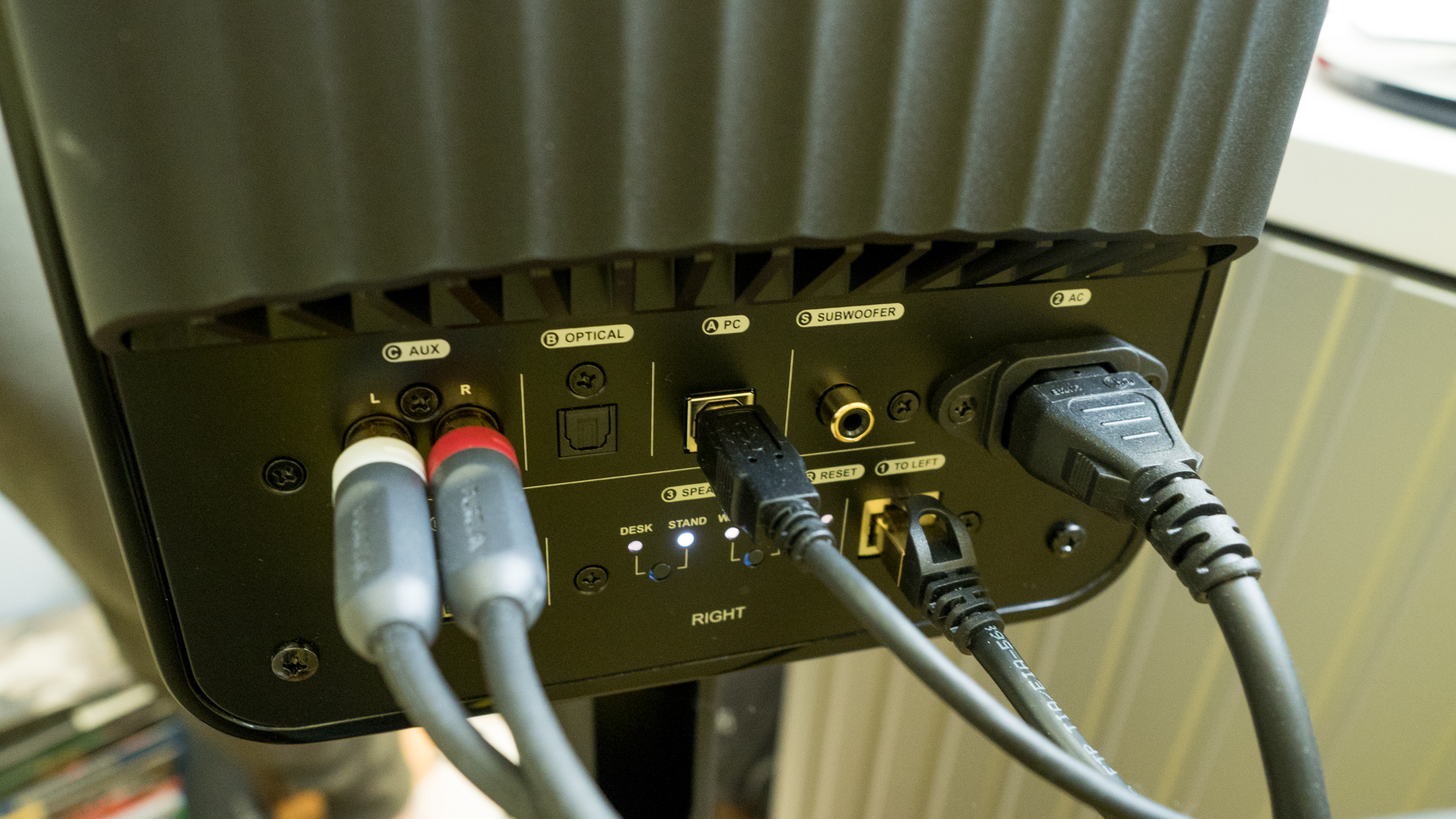
It’s a bit disappointing that neither Google Cast nor Apple AirPlay are supported, as it would have been easy to control by voice using a Google Home speaker. However, Spotify and Tidal users can control the LS50 Wireless directly, which is a nice touch.
If you don’t have your own music server, Roon, Tidal, or Spotify, there’s always the Bluetooth 4.0 input, which supports the aptX codec for CD-quality sound. Bluetooth sounds good and is convenient to find and stream music from our phone. It’s a little disappointing that aptX HD isn’t supported, as it would have been the Bluetooth input sound even better. But nitpicky audiophiles are not likely using the Bluetooth input for serious listening in the first place.
The inputs keep on coming with optical TOSLINK support for hooking up to sources like your TV. This means you can have the LS50 Wireless be your speaker setup for everything from television, wireless, and analog sources like a turntable. One thing to note that the optical input caps out at 96 kHz 24-bit so the USB input is preferable for connecting a DAC.
Last but not least, the analog audio jacks let you connect your own source devices. This can be a turntable or you can attach your own DAC, if you please.
Around the back of the speakers you’ll find the speaker’s DSP controls. You can specify if you have the LS50 Wireless on a desk or on stands and if they’re right up against the wall or have free space behind to breathe a little. This can also be tweaked within mobile app so you don’t have to go digging behind the speaker every time you want to change a setting. The app has even more advanced controls, which allows you to tweak things like the phase correction and subwoofer crossover.
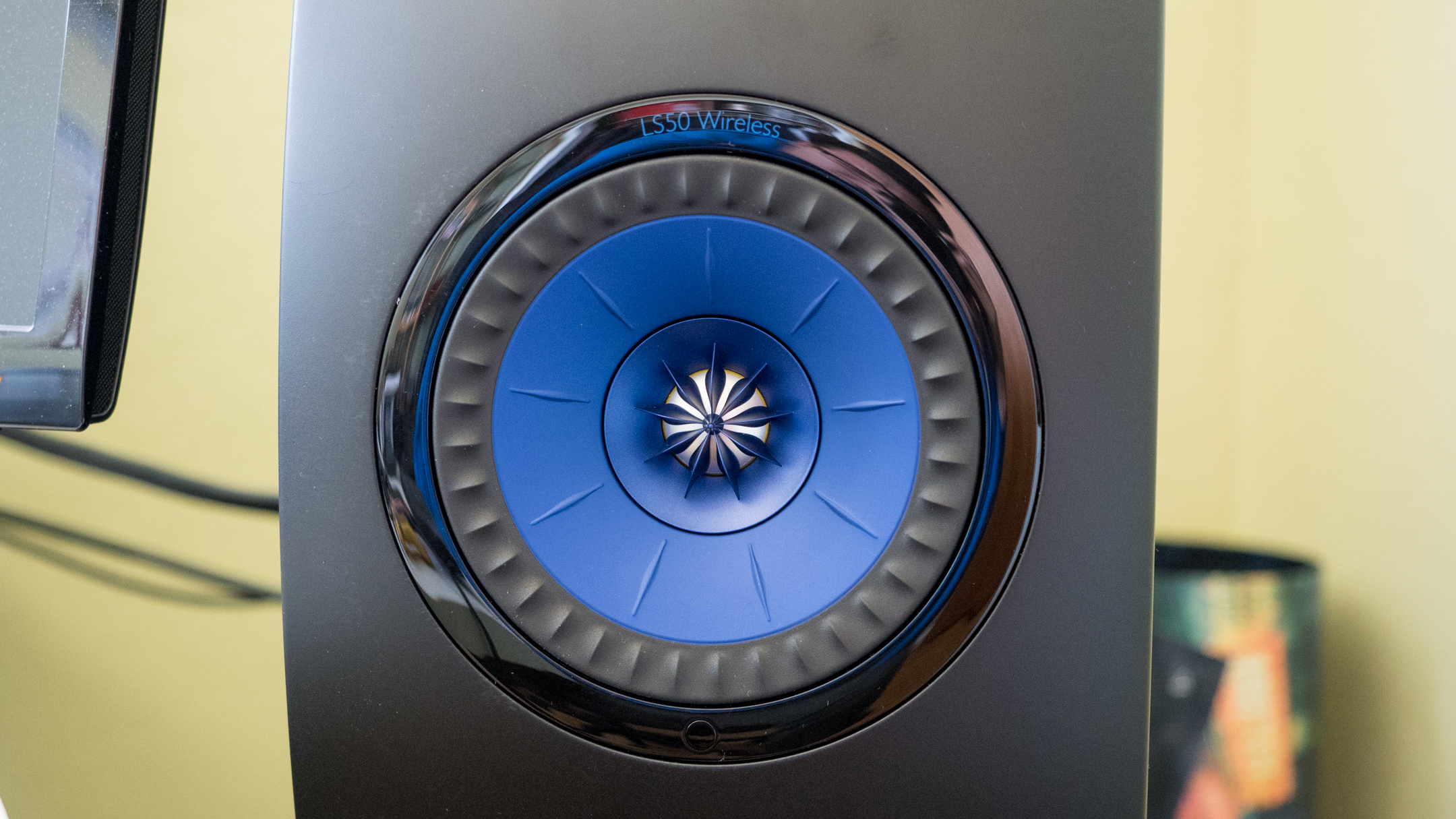
Performance
None of the above would matter if the KEF LS50 Wireless doesn’t sound good. That said, we’re happy to report that the LS50 Wireless sound phenomenal.
Overall, they are staggeringly detailed and their stand-out sonic feature is their holographic imaging and instrumental layering: We could hear exactly where each instrument was coming from and each instrument sounded distinct and never blurry. Soundstage was expansive with good space to the side and above the listener. Resolution is excellent as the speaker can dig for the micro-details that get lost in lesser audio systems.
Tonal balance is extremely neutral, which can be tweaked slightly in the mobile app. You can warm up the sound by setting the speakers to “extra bass” but the balance is near perfect from default to our ears. However, bass-lovers will want to add the optional subwoofer to get visceral bass impact that’s great for movies of electronic music. Without the sub, the LS50 Wireless still produce a surprising amount of bass and we were quite happy without the subwoofer for critical listening.
The LS50 Wireless sounds so good, you’ll be staying up all night rediscovering your music collection because that’s exactly what we did. We played record after record on our Marantz TT-15S turntable to test how various music genres sounded on the speakers. The LS50 Wireless sounded amazing with every genre we threw at it and every input sounded spectacular. In terms of sonic quality there’s very little to nitpick about the KEF LS50 Wireless.
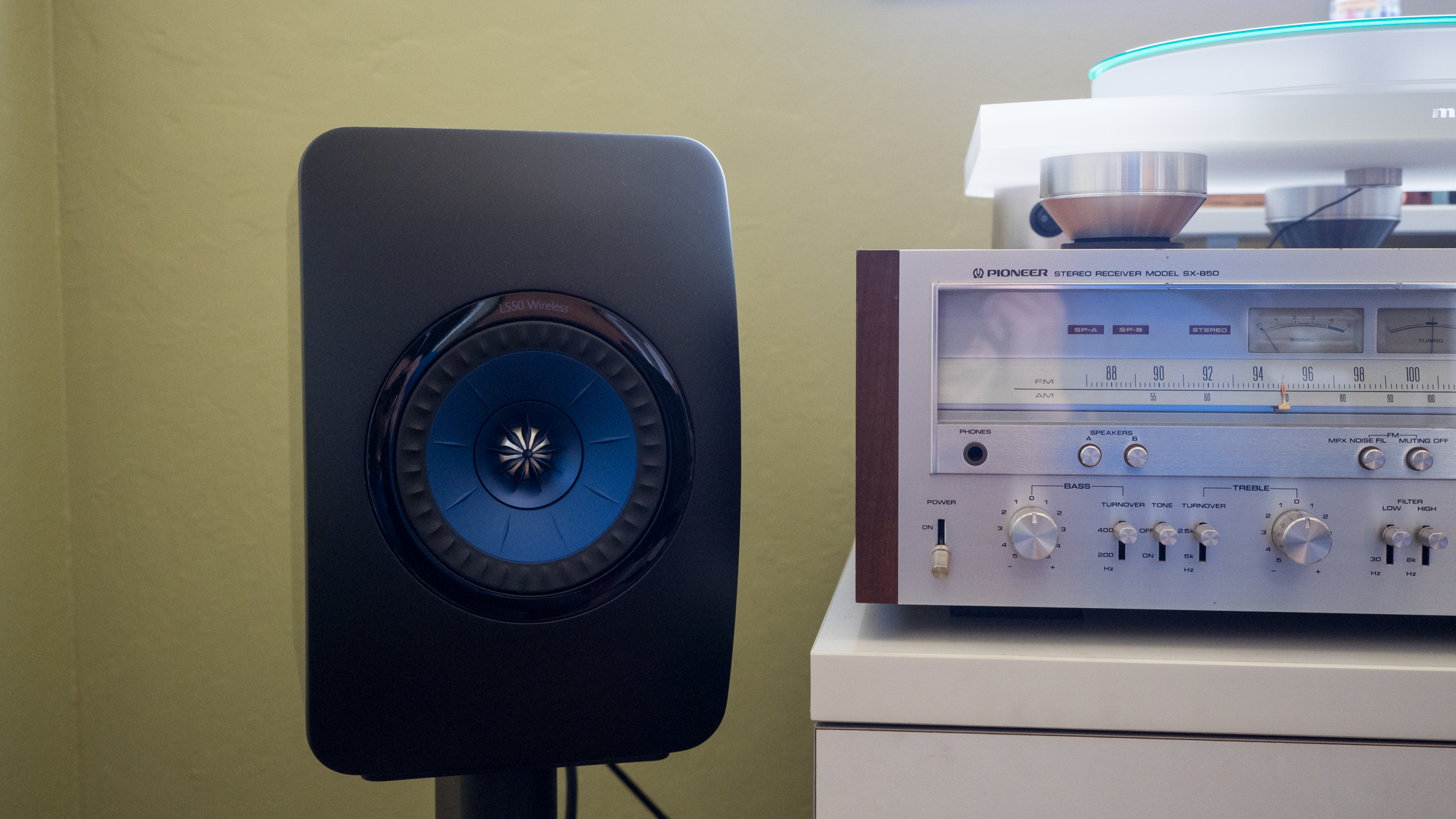
Verdict
The KEF LS50 Wireless is an amazing pair of bookshelf speakers that has just about every input imaginable. The versatility of the speakers is really their selling point, as they will easily fit into anyone’s audio setup. They even work well as TV speakers as their holographic imaging makes watching movies fun. You’ll want to pair them with the optional subwoofer if you want to get room-rattling bass, though. That said, out of the box, we found the LS50 Wireless’s tonal balance just about perfect.
So who benefits the most from the LS50? Mostly it's audiophiles who want the convenience of wireless audio, whether that’s directly from internet streaming services like Tidal or Spotify or from a home server. While it’s a bummer Google Cast and Apple AirPlay aren’t supported, we think most people will we happy with the myriad of other ways to play music.
At $2,200 (£2,000, about AU$2,840) the KEF LS50 Wireless is a lot of money, but you’ll be hard pressed to put together a better sounding and more versatile system for the same price. This speaker setup is perfect for the audiophile who doesn’t want to throw down several thousand to piece together a system with monoblock amps, a preamp, DAC and wireless streaming equipment.
For seasoned audiophiles with high-end equipment already, however, there’s always the wired LS50, which is nearly half the price.
